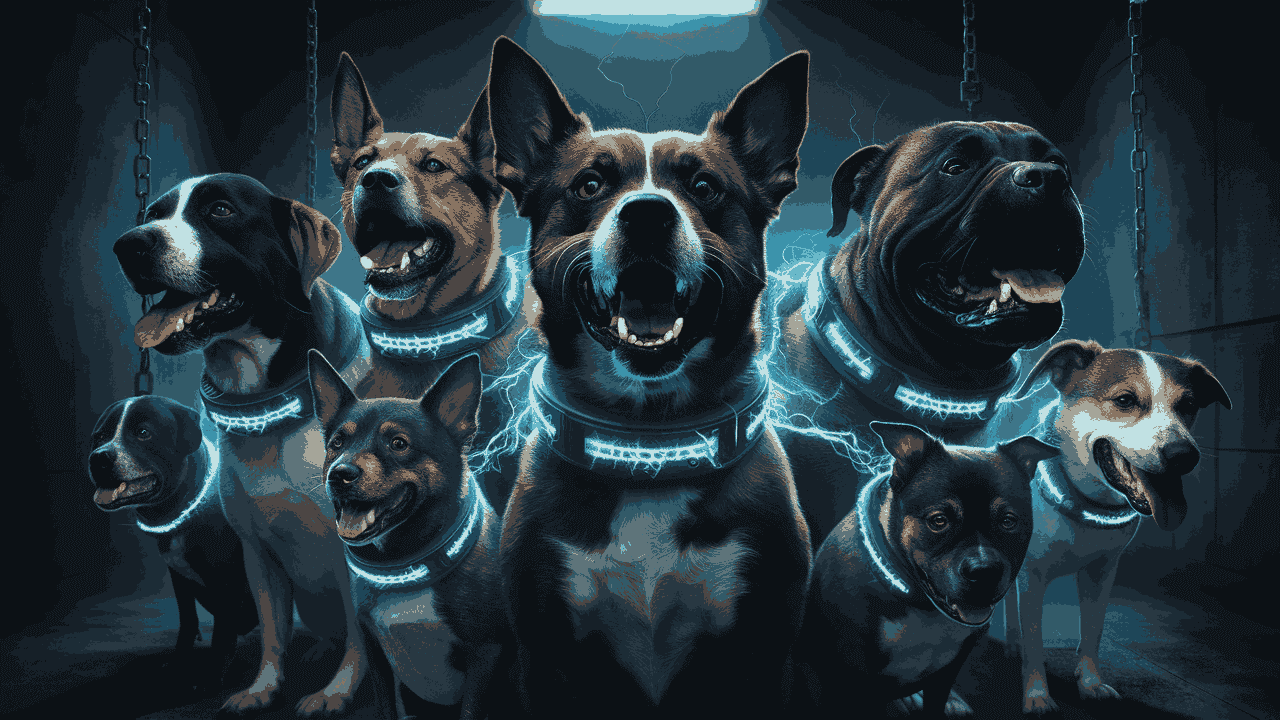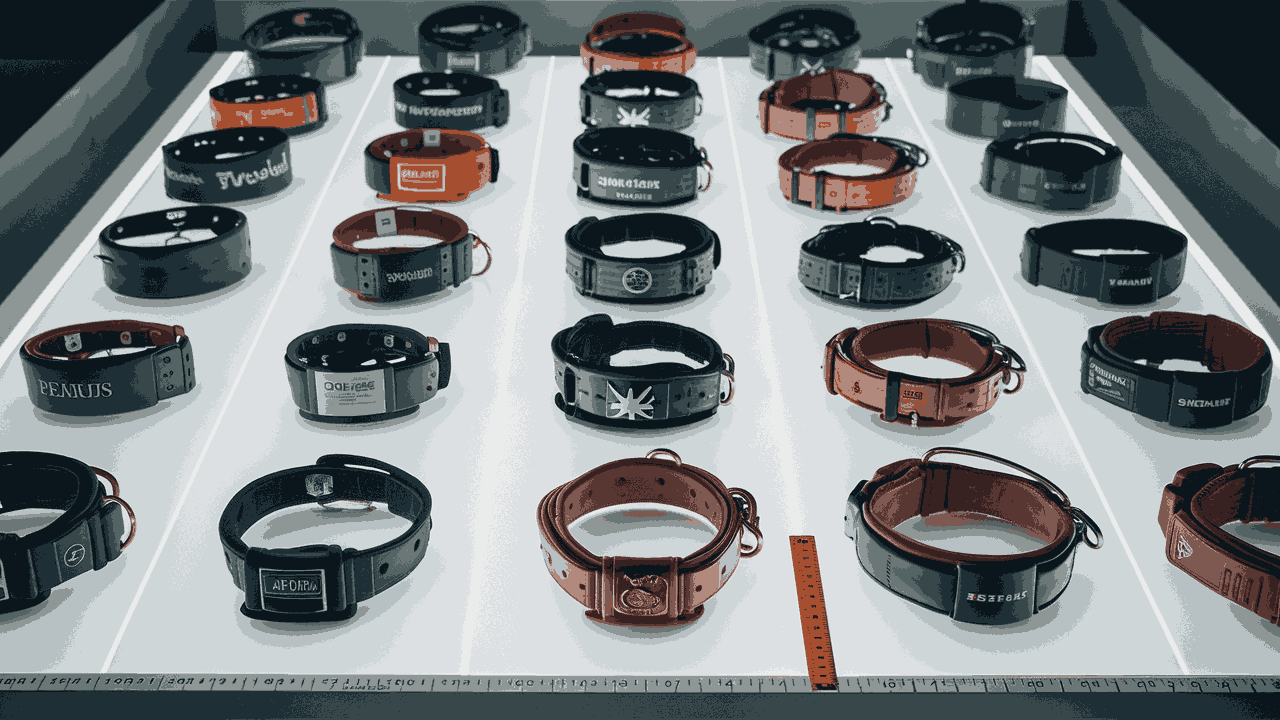Shock Collar Potty training can be one of the most challenging aspects of owning a dog. It requires patience, consistency, and the right tools to ensure success.
Shock collars, often controversial, have gained attention as a potential solution for expediting the potty-training process. In this comprehensive guide,
we’ll delve into using shock collars for potty training, addressing concerns, highlighting benefits, and providing expert tips for safe and effective implementation.
A shock collar, an e-collar or an electronic collar delivers a mild electric stimulus to a dog’s neck. The owner or trainer can trigger it using a remote control or an automated sensor.
Dog Trainer Bible

The Ultimate eBook collection
Dog trainers often use these collars for various purposes, including obedience training, behavioural correction, and containment. The electric stimulus the collar delivers is typically adjustable in intensity and serves as a correction or deterrent to discourage undesirable behaviours.
However, it is essential to use shock collars responsibly and, therefore, under the guidance of a professional to ensure the dog’s safety and well-being.
Understanding Shock Collars:
Shock collars, e-collars, or electronic collars deliver a mild electric stimulus to a dog’s neck when a remote control or an automated sensor triggers them.
While initially developed for various training purposes, including obedience and behavioural correction, they have garnered interest for their potential in potty training.

Benefits of Shock Collars for Potty Training:
Instant Feedback:
Shock collars provide immediate feedback to the dog when they exhibit undesirable behaviour, such as urinating indoors. This prompt response helps associate the action with the consequence, aiding in faster learning.
Consistency:
Unlike verbal commands or manual correction, which may vary in tone and timing, shock collars offer consistent correction, reinforcing the desired behaviour consistently.
Remote Control:
Many shock collars come with remote controls, allowing pet owners to intervene from a distance. This feature is handy for outdoor potty training or when the owner is not near the dog.
Safety Measures and Best Practices:
While shock collars can be practical tools, it’s crucial to prioritize the safety and well-being of your pet. Here are some essential safety measures and best practices to keep in mind:
Consultation with a Professional:
Consult a veterinarian or certified dog trainer before using a shock collar for potty training. They can advise whether this method is suitable for your dog’s temperament and provide recommendations on appropriate usage.
Proper Fit and Adjustment:
Ensure that the shock collar fits comfortably around your dog’s neck, with enough room for two fingers to fit between the collar and the skin. Adjust the intensity level according to your dog’s size, breed, and sensitivity.
Gradual Introduction:
Introduce the shock collar gradually, allowing your dog to acclimate to the sensation. Start with the lowest intensity level and observe your dog’s response before gradually increasing the level.
Positive Reinforcement:
Combine shock collars with positive reinforcement techniques, such as treats and praise, to reinforce desired behaviours. Reward your dog whenever it successfully potty outdoors, creating a positive association with the action.
Monitoring and Supervision:
Always supervise your dog during potty training sessions and monitor their behaviour closely. Remove the shock collar when not in use to prevent any accidental activation.
Addressing Concerns:
Addressing common concerns and misconceptions surrounding using shock collars for potty training is essential. While some critics argue against their use, citing potential harm or stress to the dog,
proponents emphasize the importance of responsible usage and proper training techniques. By adhering to safety guidelines and seeking professional advice, pet owners can minimize risks and maximize the benefits of shock collars for potty training.

Types of Shock Collars:
Manufacturers offer several shock collars designed for different purposes and various training needs. Some common types include:
Remote-Controlled Shock Collar:
The dog owner or trainer operates these collars using a remote control. They allow for precise timing and intensity adjustment of the electric stimulus, making them suitable for obedience training and behaviour modification.
Bark Control Shock Collar:
Bark control collars curb excessive barking in dogs by detecting the vibration of the dog’s vocal cords and delivering a mild electric shock or other deterrent stimuli when the dog barks excessively.
Containment System Shock Collar:
Owners use containment system collars with invisible dog fences to keep dogs within a predefined boundary.
These collars deliver a warning tone or electric shock when the dog approaches or crosses the boundary, serving as a deterrent to prevent escape.
Invisible Fence Shock Collar:
Owners use invisible fence collars with underground or wireless dog containment systems, similar to containment system collars.
They deliver a static correction when the dog attempts to leave the designated area, reinforcing the fence’s boundaries.
Training Shock Collars with GPS:
Some shock collars have GPS tracking capabilities, allowing dog owners to track their pets’ locations in real-time and remotely administer commands or corrections via the collar.
Vibration and Tone Shock Collar:
Some collars offer vibration or tone modes in addition to electric shock. These modes provide alternative stimuli to correct behaviour or communicate with the dog, making them suitable for dogs sensitive to electric shocks or training requiring a milder approach.
Each type of shock collar has unique features and applications, and it’s essential to choose the right type based on the dog’s specific training needs and temperament.
Additionally, using shock collars responsibly and in conjunction with positive reinforcement techniques is crucial to ensure effective and humane training outcomes.
Final Words
Shock collars can be valuable tools for expediting potty training, providing instant feedback and consistency in correction. However, it’s crucial to approach their usage responsibly, prioritizing the safety and well-being of your pet.
Pet owners can effectively utilize shock collars as part of their potty-training regimen by consulting with professionals, adhering to safety measures, and incorporating positive reinforcement techniques. With patience, consistency, and proper guidance, achieving success in potty training is within reach for every dog owner.




